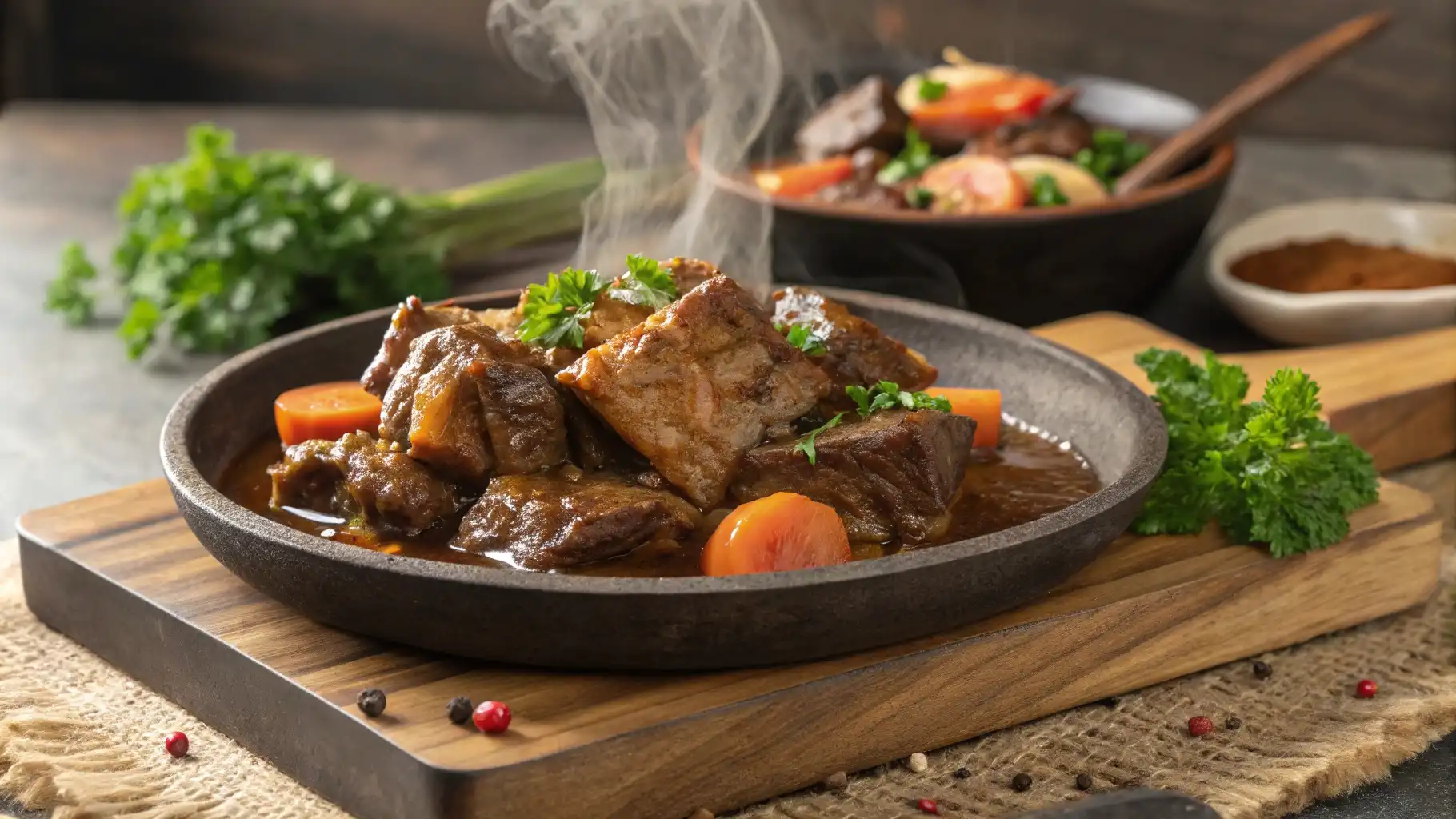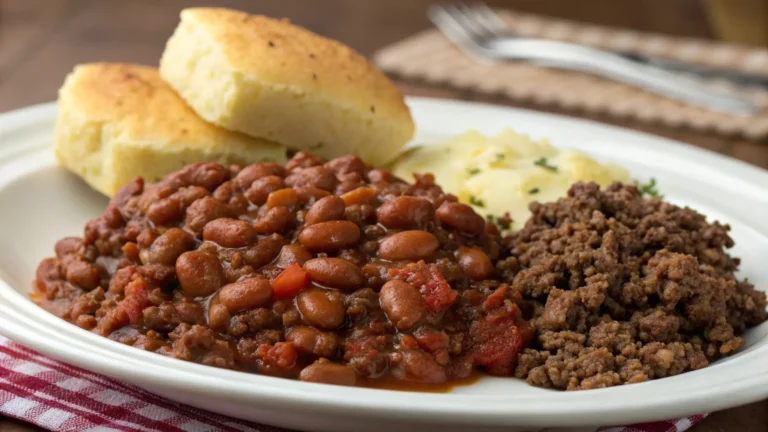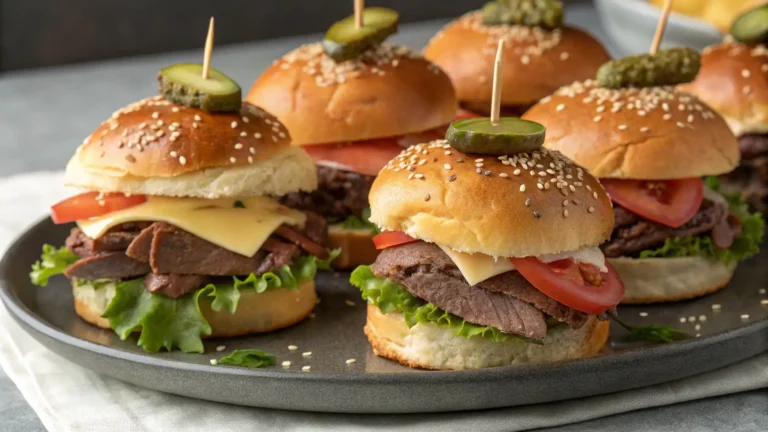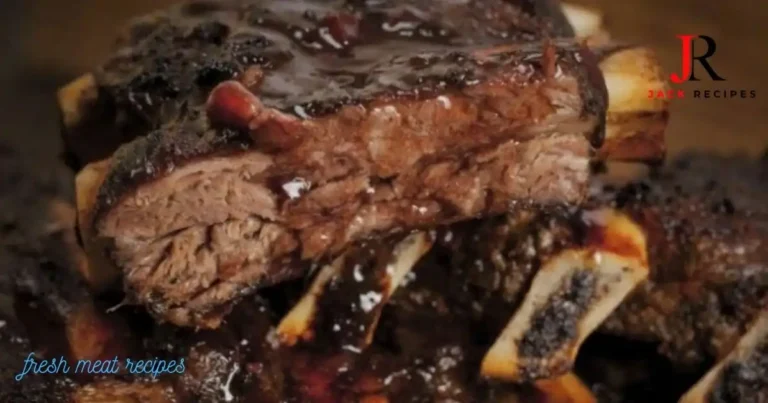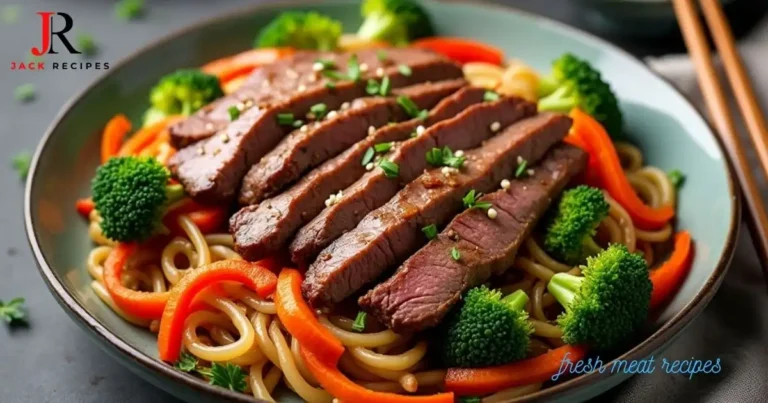How to Cook Beef Neck Bones : A Delicious & Easy Guide for 2025
Beef neck bones are a hidden gem in the culinary world—often overlooked but brimming with flavor and potential. These cuts of meat, taken from the neck region of cattle, may not have the same star power as ribeyes or filets, but they more than make up for it with their rich taste, tender texture, and affordability. Whether you’re preparing a comforting stew, simmering a nourishing bone broth, or experimenting with international recipes, beef neck bones offer endless possibilities for creating delicious meals.
In this comprehensive guide, we’ll delve into everything you need to know about beef neck bones—from their definition and nutritional value to cooking methods, serving suggestions, and even creative ways to use leftovers. By the end, you’ll be equipped with the knowledge and inspiration to incorporate these versatile cuts into your regular rotation of dishes.
What Are Beef Neck Bones?
Beef neck bones are cuts of meat that come from the neck region of a cow. This part of the animal is known for its robust flavor and tender texture when cooked properly. While they may not be as popular as other cuts like ribeye or sirloin, beef neck bones are prized by home cooks and chefs who appreciate their depth of flavor and versatility in various dishes.
Definition and Overview
Beef neck bones typically include small amounts of meat clinging to them, which become incredibly tender during long cooking processes. The collagen-rich connective tissue in these bones breaks down into gelatin, giving dishes a luxurious mouthfeel and enhancing overall richness. They are commonly used in traditional soul food recipes, such as slow-cooked neck bones with gravy, as well as international cuisines like Mexican tacos or Korean soups.
Their unique qualities make them indispensable in slow-cooking methods like braising, stewing, or smoking. When prepared correctly, beef neck bones deliver a melt-in-your-mouth experience that rivals premium cuts of beef.
Nutritional Value and Benefits
Despite being less expensive than premium cuts, neck bones pack a powerful nutritional punch:
- High Protein Content : Beef neck bones contain lean protein, essential for muscle repair and growth.
- Rich in Collagen : As mentioned earlier, the connective tissues in neck bones break down into collagen during cooking. Collagen supports joint health, skin elasticity, and gut function.
- Minerals and Vitamins : They provide key nutrients like iron, zinc, and B vitamins, which support energy production and immune system health.
- Low Waste Cooking : Using neck bones promotes sustainable eating by utilizing parts of the animal that might otherwise go unused.
By incorporating beef neck bones into your diet, you can enjoy flavorful meals while reaping numerous health benefits. Plus, their budget-friendly nature makes them an excellent choice for anyone looking to stretch their grocery budget without compromising on taste.

Beef Neck Bones Ingredients
When it comes to cooking with beef neck bones, pairing them with complementary ingredients is key to unlocking their full potential. Below, we explore the essential components that elevate these humble cuts into culinary masterpieces.
Key Ingredients Commonly Used with Beef Neck Bones
- Aromatics : Onions, garlic, and bell peppers form the backbone of many recipes featuring beef neck bones. Sautéing these aromatics first creates a flavorful base for your dish. Celery and carrots (commonly referred to as “mirepoix”) add sweetness and depth to the overall flavor profile.
- Liquids : Stock or broth (beef, chicken, or vegetable) is often used to simmer the neck bones, ensuring they become tender and infusing the dish with extra richness. Tomato sauce or paste adds acidity and thickness to the liquid, creating a robust gravy or sauce.
- Acidity : A splash of vinegar, wine, or lemon juice balances the richness of the beef and enhances its umami qualities.
- Vegetables : Potatoes, sweet potatoes, and root vegetables like turnips or parsnips absorb the flavors of the dish while adding texture and substance. Leafy greens such as collard greens, kale, or spinach can be added toward the end of cooking for a pop of color and nutrition.
- Starches : Rice, pasta, or dumplings are excellent accompaniments that soak up the flavorful juices from the cooked neck bones.
Seasonings and Spices
The right blend of seasonings and spices elevates beef neck bone dishes to new heights. Here are some popular options:
- Basic Seasonings : Salt and pepper are indispensable for enhancing the natural flavors of the meat. Paprika adds a smoky or slightly sweet note depending on the variety used.
- Herbs : Fresh herbs like thyme, rosemary, bay leaves, and parsley bring earthy undertones to the dish. Dried herbs work just as well if fresh ones aren’t available.
- Spices : Cumin, coriander, chili powder, or turmeric introduce bold, aromatic notes ideal for international-inspired recipes. For heat lovers, cayenne pepper or red pepper flakes can be added to spice things up.
- Savory Enhancers : Worcestershire sauce, soy sauce, or fish sauce deepen the umami flavors of the dish. Mustard powder or horseradish can add tangy complexity.
Accompaniments
To make your beef neck bone dish even more satisfying, consider serving it with one or more of the following accompaniments:
- Side Dishes : Mashed potatoes, creamy polenta, or buttered noodles provide a comforting contrast to the rich, savory main course. Cornbread or biscuits soak up every last drop of gravy.
- Condiments : Hot sauce, horseradish cream, or pickled vegetables offer zesty contrasts to the hearty flavors of the dish.
- Garnishes : Fresh herbs like parsley, cilantro, or green onions add freshness and visual appeal. A dollop of sour cream or yogurt introduces a cooling element to balance out the richness.

How to Cook Beef Neck Bones (Step by Step)
Cooking beef neck bones requires patience and attention to detail, but the end result is well worth the effort. These flavorful cuts of meat become incredibly tender when cooked low and slow, releasing rich, savory juices that elevate any dish. Below is a step-by-step guide to help you master the art of cooking beef neck bones.
Step 1: Season and Brown the Neck Bones
The first step in preparing beef neck bones is seasoning and browning them to develop a flavorful crust. This process not only enhances the taste but also locks in moisture for juicy results.
- Seasoning : Pat the beef neck bones dry with paper towels to remove excess moisture. This ensures they brown properly instead of steaming. Generously season both sides of the bones with salt, pepper, and your choice of spices such as paprika, garlic powder, or cumin.
- Browning : Heat a large, heavy-bottomed pot or Dutch oven over medium-high heat. Add a tablespoon of oil (such as vegetable or olive oil) to coat the bottom. Once the oil is shimmering, place the neck bones in the pot without overcrowding. Work in batches if necessary to avoid lowering the temperature too much. Cook each side for about 3-5 minutes until golden brown. The Maillard reaction during this process creates complex flavors that enhance the final dish.
- Tips for Achieving a Flavorful Crust : Avoid moving the bones around too much while browning; let them sit undisturbed to form a crust. If using a cast-iron skillet, preheat it before adding the bones for optimal searing.

Step 2: Sauté Vegetables
After browning the neck bones, set them aside temporarily and use the same pot to sauté aromatics. This step builds the foundation of flavor for your dish.
- Preparing Aromatics : Dice onions, mince garlic, and chop bell peppers into bite-sized pieces. Other common vegetables include carrots, celery, and fresh herbs like thyme or rosemary. Add these ingredients to the pot, using the residual fat from browning the bones to start caramelizing the vegetables.
- Caramelization : Cook the vegetables over medium heat, stirring occasionally, until they soften and begin to brown slightly. Caramelization releases natural sugars, adding sweetness and depth to the dish.
- Importance of Caramelization : Caramelized vegetables contribute layers of flavor to the dish, complementing the richness of the beef neck bones. They also act as a base for the sauce or broth.

Step 3: Add Tomato Paste
Tomato paste is a key ingredient in many recipes featuring beef neck bones. It adds acidity, sweetness, and color, enhancing the overall taste profile.
- Incorporating Tomato Paste : Stir in 2-3 tablespoons of tomato paste (adjust according to recipe requirements) to the sautéed vegetables. Cook for 1-2 minutes, allowing the paste to darken slightly and release its flavors.
- Techniques for Even Distribution : Break up any lumps of tomato paste with a wooden spoon to ensure it blends seamlessly with the vegetables. Deglaze the pan with a small amount of liquid (like wine, vinegar, or broth) to scrape up any browned bits stuck to the bottom. These bits are packed with flavor!

Step 4: Add Remaining Ingredients
Now that the base is prepared, it’s time to add the remaining ingredients and cook the neck bones using a method like braising or stewing.
- Liquids : Pour in enough liquid (stock, broth, water, or a combination) to partially submerge the neck bones. Leave some space at the top for even cooking.
- Herbs and Seasonings : Tie fresh herbs like bay leaves, thyme, and parsley into a bundle with kitchen twine and add them to the pot. Alternatively, use dried herbs for convenience. Adjust seasoning with additional salt, pepper, or spices as needed.
- Cooking Methods : Cover the pot and let the neck bones cook slowly for 2-3 hours, turning occasionally, until they are fork-tender. For a more intense flavor, simmer uncovered for an extended period, allowing the sauce to reduce and thicken. Alternatively, transfer all ingredients to a slow cooker and cook on low for 6-8 hours for hands-free preparation.

Serving Suggestions
Beef neck bones are a versatile ingredient that can serve as the centerpiece of many hearty meals. While their rich, savory flavor stands out on its own, pairing them with complementary side dishes and garnishes can elevate your dining experience to new heights.
Pairings for Beef Neck Bones
When deciding what to serve alongside beef neck bones, consider ingredients that balance their robust taste and texture. Here are some ideas:
- Starchy Accompaniments : Creamy mashed potatoes, soft polenta, fluffy white rice, or hearty quinoa pair beautifully with spiced neck bone stews.
- Bread Options : Warm, buttered dinner rolls or classic cornbread complement the richness of beef neck bones with their sweet, crumbly texture.
- Grains and Legumes : Quinoa, couscous, black-eyed peas, kidney beans, or pinto beans create a satisfying combination when paired with beef neck bones.
Ideas for Side Dishes
Side dishes can enhance the overall meal by introducing fresh flavors, textures, and colors. Consider these options:
- Vegetable Sides : Root vegetables such as carrots, parsnips, and sweet potatoes roasted with olive oil, salt, and pepper complement the earthy tones of beef neck bones. Steamed greens like collard greens, kale, or spinach bring freshness and nutrition to the plate.
- Salads : A simple mixed green salad with vinaigrette adds brightness and crunch to the meal. For something heartier, try a grain salad featuring farro, chickpeas, cherry tomatoes, and feta cheese.
Garnishes for Added Flair
Garnishes not only enhance the visual appeal of your dish but also introduce additional layers of flavor. Consider these options:
- Fresh Herbs : Sprinkle chopped parsley, cilantro, or basil over the finished dish for a burst of freshness. Garnish with thyme sprigs or rosemary for a rustic touch.
- Spices and Sauces : Drizzle hot sauce, horseradish cream, or chimichurri sauce for a zesty kick. Offer a side of mustard or BBQ sauce for dipping.
- Toppings : Crumbled bacon or toasted nuts add crunch and texture. A dollop of sour cream or yogurt introduces a cooling element to balance the richness.

Cooking Tips and Considerations
Cooking beef neck bones can be a rewarding experience, but it requires some understanding of the process to achieve the best results. Whether you’re preparing a slow-cooked stew, a hearty braise, or even bone broth, these tips and considerations will help you avoid common pitfalls and ensure your dish turns out perfectly every time.
General Advice for Cooking Beef Neck Bones
- Choose Quality Ingredients : Start with fresh, high-quality beef neck bones. Look for cuts that still have some meat attached, as they’ll add more flavor and texture to your dish. Opt for organic or grass-fed beef if possible, as these options tend to have better flavor profiles and are often healthier.
- Patience is Key : Beef neck bones require long, slow cooking to become tender. Plan ahead and allow sufficient time for the connective tissues to break down into gelatin, which gives the dish its rich, velvety texture.
- Use the Right Equipment : A heavy-bottomed Dutch oven or cast-iron pot is ideal for braising beef neck bones, as it distributes heat evenly and retains moisture. For hands-free cooking, a slow cooker or pressure cooker can also work well, especially for busy schedules.
- Don’t Forget to Deglaze : After browning the neck bones, deglaze the pan with liquid (wine, vinegar, or broth) to scrape up the flavorful browned bits stuck to the bottom. These bits, known as “fond,” contribute significantly to the depth of flavor in your dish.
- Balance Flavors : Incorporate a mix of sweet, sour, salty, and umami elements to create a well-rounded taste profile. For example, tomatoes provide acidity, while herbs like thyme and rosemary add earthiness.
Common Mistakes to Avoid
- Skipping the Browning Step : Failing to properly brown the beef neck bones before simmering them is one of the most common mistakes. Browning develops essential flavors through the Maillard reaction, which enhances the overall taste of the dish.
- Overcrowding the Pan : When browning the neck bones, overcrowding the pan can cause them to steam instead of sear, resulting in less flavor. Work in batches if necessary to achieve an even golden-brown crust.
- Not Adding Enough Liquid : Ensure there’s enough liquid in the pot to partially submerge the neck bones during cooking. Insufficient liquid can lead to dry, tough meat and prevent the collagen from breaking down properly.
- Undercooking the Bones : Beef neck bones need ample time to cook until they’re fork-tender. Rushing the process can leave the meat chewy and unappetizing. Check for doneness by inserting a fork into the meat; it should slide in easily when fully cooked.
- Neglecting Seasoning : Don’t rely solely on the natural flavors of the neck bones. Proper seasoning throughout the cooking process ensures a balanced and delicious final product. Taste and adjust seasonings as needed.

Frequently Asked Questions
Where Can I Find Neck Bones?
Beef neck bones may not be as prominently displayed as other cuts of meat, but they’re widely available if you know where to look. Here are your best options for purchasing them:
- Local Butcher Shops : Specialty butcher shops often carry a variety of bone cuts, including neck bones. They can also provide advice on selecting high-quality cuts and offer custom cuts upon request.
- Grocery Stores : Many large grocery chains stock beef neck bones in their meat departments, especially around holidays or when demand for slow-cooked meals increases. Check the frozen section if they’re not available fresh.
- Online Retailers : Websites like ButcherBox, US Wellness Meats, or AmazonFresh deliver high-quality beef neck bones directly to your door. This is an excellent option if local sources are limited.
- International Markets : Ethnic markets catering to African, Caribbean, or Latin American cuisines frequently sell beef neck bones, as they’re popular in traditional recipes from these regions.

What Are Good Substitutes If I Can’t Find Them?
If beef neck bones aren’t readily available, there are several alternatives that can mimic their flavor and texture profile:
- Oxtail : Oxtail is another rich, gelatinous cut of meat that works well in stews and braises. It has a slightly sweeter taste compared to neck bones but delivers similar tenderness when cooked low and slow.
- Short Ribs : Beef short ribs are thicker and meatier than neck bones but share the same fatty, flavorful qualities. They’re ideal for slow-cooking methods like braising or smoking.
- Shank Bones : Shank bones come from the leg of the cow and contain plenty of connective tissue, making them perfect for long-cooking dishes. While leaner than neck bones, they still produce rich, savory results.

How Do I Ensure the Finished Neck Bones Are Tender and Not Tough?
Achieving tender beef neck bones requires patience and attention to detail. Follow these techniques to guarantee success:
- Cook Low and Slow : The key to tenderizing tough cuts like neck bones is prolonged exposure to gentle heat. Braising at low temperatures (around 300°F/150°C) for 2-3 hours allows collagen to break down into gelatin, softening the meat.
- Use Enough Liquid : Ensure the neck bones are partially submerged in liquid during cooking. This prevents them from drying out and helps distribute flavors evenly throughout the dish.
- Don’t Rush the Process : Avoid turning up the heat to speed things along, as this can result in uneven cooking and tough meat. Let the natural breakdown of connective tissues occur over time.

Nutrition Facts (Per Serving)
While beef neck bones are a delicious and hearty addition to any meal, understanding their nutritional content is essential for maintaining a balanced diet. Below, we provide a detailed breakdown of the key macronutrients—calories, fats, proteins, and carbohydrates—and discuss health considerations when incorporating beef neck bones into your meals.
Breakdown of Calories, Fats, Proteins, and Carbohydrates
The exact nutritional values of beef neck bones can vary depending on preparation methods, portion sizes, and accompanying ingredients. However, here’s an approximate nutritional profile per serving (assuming one serving equals about 150 grams of cooked beef neck bones):
- Calories : Approximately 300-400 calories per serving, depending on fat content and cooking method.
- Fats : Total Fat: ~20-25 grams; Saturated Fat: ~8-10 grams.
- Proteins : Protein: ~25-30 grams.
- Carbohydrates : Carbs: ~0 grams (unless additional ingredients like sauces or side dishes are included).
- Micronutrients : Iron: ~3-4 mg; Zinc: ~4-5 mg; B Vitamins: Various forms, including B6 and B12, crucial for energy metabolism and nerve function.
Health Considerations When Consuming Beef Neck Bones
- Fat Content : Beef neck bones are relatively high in saturated fat, which, when consumed in excess, may raise cholesterol levels and increase the risk of heart disease. To mitigate this, trim visible fat where possible or pair them with low-fat side dishes like steamed vegetables or salads.
- Collagen and Gelatin Benefits : The collagen-rich connective tissues in neck bones break down during cooking into gelatin, which supports joint health, skin elasticity, and gut function.
- Portion Control : Given their calorie density, it’s important to practice portion control to avoid overconsumption. A single serving (about 150 grams) provides ample nutrition without excessive calories.
- Cooking Methods : Braising or slow-cooking helps tenderize the meat while minimizing added oils or fats. Opt for healthier liquids like broth or wine instead of cream-based sauces to reduce unnecessary calories.
- Balanced Diet : Pair beef neck bones with nutrient-rich sides such as leafy greens, whole grains, and colorful vegetables to create a well-rounded meal.
Conclusion
Beef neck bones are a flavorful, versatile, and nutritious ingredient that shine when cooked low and slow. Whether braised, stewed, or turned into bone broth, they offer rich taste, tender texture, and numerous health benefits. By following the tips and techniques in this guide, you can unlock their full potential and enjoy delicious meals while incorporating them into a balanced diet. Experiment with recipes, explore new flavors, and let beef neck bones become a staple in your kitchen. Happy cooking

